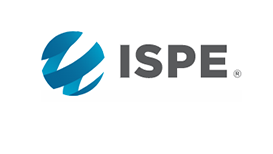TRANSFER HATCH DESIGN FOR SAFE CLEANROOM MATERIAL TRANSFER
June 25, 2019 Cleanroom Supplies Blogger

Is Your Transfer Hatch Compliant With GMP, MHRA and ISO ?
Transfer hatches are an integral part of most cleanrooms… but do you know what to look for when selecting a transfer hatch?
See the range of options for transfer hatches here.
Safe transfer of material in and out of a cleanroom is done by use of cleanroom transfer hatches. Also referred to as pass through or pass thru hatch or box.
This is necessary to avoid cross contamination between rooms and to protect the product and environment.
Particulate or microbial contamination is a much higher risk if your transfer protocol, including transfer hatch design and location is not carefully considered.
This requires expertise both in the design and manufacturing stage.
What Does a Transfer Hatch Do?
A pass though hatch is a barrier between classified or non-classified areas to control the passage of materials and product whilst minimising the risk of contamination. They also reduce the use of personnel doorways and the passage of personnel unnecessarily from preparation areas to process areas.
Hatches usually protrude through the wall of adjoining work space with access doors on each side. These doors should always be interlocked to prevent both doors being opened at the same time. This would break the integrity of the cleanroom differential pressure regime.
 |
The doors are interlocked mechanically or electronically.
The NHS has produced a number of articles to identify preferred procedures for transfer within NHS cleanrooms, for example:
Guidance for Aseptic Transfer Processes in the NHS
It is important that transfer hatches are manufactured in high quality materials, designed to withstand the level of disinfection required. It is also important that the components used in that hatches do not themselves contribute to or harbor contamination.
What Type of Hatch Should I Be Using?
There is not a straight forward answer to that question. Again, expertise and knowledge of the process and cleanroom environment are necessary.
However, as a guide, most cleanrooms utilise one of three types of transfer hatch.
Materials selected for hatches can be 316 grade, 304 grade stainless steel. TRESPA (a high pressure laminate) is a popular selection and also polypropylene.
- Static
- Passive
- Ventilated
There are other types, but these are normally for more extreme applications, such as containment and bio hazard applications.
There are many features to consider too, such as:
- Purge Cycle before interlock release
- Integrated UV sterilisation cycle
- Recovery Test
For more detailed information and you can visit Cleanroom Supplies Transfer Hatch page where you can Contact Us and we’ll do our best to advise and guide you.












